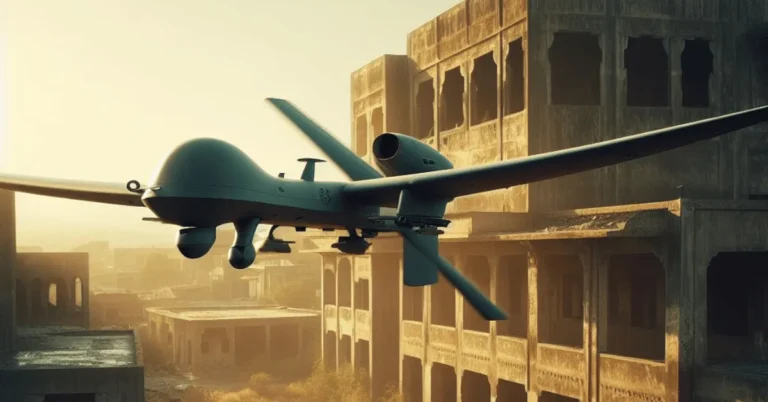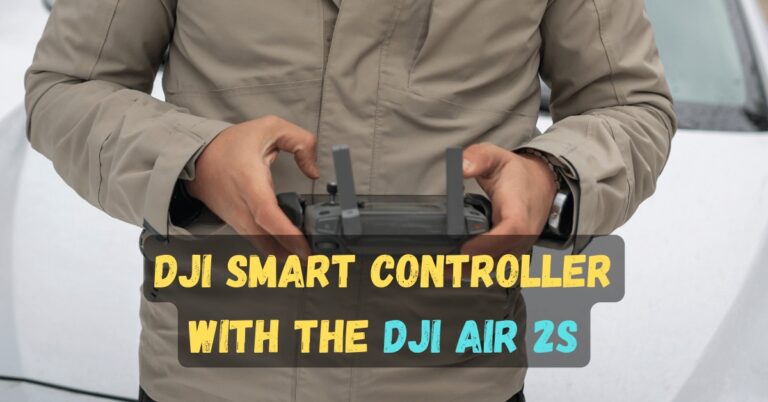Are There Any Drones That are Completely Silent?

The notion of completely silent drones is a pervasive myth, often perpetuated by marketing strategies that tout minimal noise levels.
However, the reality is that no drone can achieve total silence with the current state of technology. To understand why, it’s essential to delve into the principles of sound generation and transmission.
Understanding Sound Generation in Drones
Sound Production in Drones
Sound is produced when an object vibrates, creating pressure waves in the surrounding medium, typically air.
For drones, these vibrations primarily originate from three sources: the propulsion system, the rotors, and the aerodynamic flow around the body of the drone.
Propulsion System Noise
The propulsion system, usually an electric motor, generates noise due to the mechanical movement of its components.
Rotor Noise
The rotors, which are necessary to create lift, also contribute significantly to noise levels. As they spin, they slice through the air, creating turbulence and pressure changes that are perceived as sound.
Aerodynamic Noise
Aerodynamic noise is another unavoidable factor. As the drone moves, the interaction between the air and its surfaces generates additional sound.
These aerodynamic effects are amplified with increased speed and maneuvering, making it practically impossible to achieve a completely silent operation.
Curious about whether a landing pad helps a drone land? Learn more about the benefits of landing pads in our guide on landing pads.
Marketing vs. Reality
Marketing strategies often exaggerate the quietness of drones, using terms like “whisper-quiet” or “virtually silent.” While newer models may indeed be quieter than their predecessors, they are not devoid of sound.
Technological innovations, such as better rotor designs and more efficient motors, have reduced noise levels, but complete silence remains unattainable.
Current Advancements in Drone Noise Reduction
DJI Mavic Air 2
The pursuit of silent drones has led to significant advancements in drone technology, with manufacturers increasingly focused on reducing noise levels.
One of the frontrunners in this category is the DJI Mavic Air 2. Known for its compact design and advanced features, the Mavic Air 2 incorporates low-noise propellers and an aerodynamic body that significantly reduces its acoustic footprint.
Parrot Anafi
Another notable model is the Parrot Anafi. This drone is engineered with ultra-quiet motors and lightweight, efficient propellers.
The result is a drone that not only performs well but also operates quietly, making it suitable for both recreational use and professional tasks like wildlife monitoring, where minimizing disturbance is crucial.
Yuneec Typhoon H Plus
The Yuneec Typhoon H Plus also deserves mention. This model utilizes six rotors, which not only contribute to its stability but also help distribute the noise more evenly, resulting in a quieter flight.
The Typhoon H Plus is particularly favored in the filmmaking industry, where capturing audio without drone interference is essential.
Wondering Can Air Defense Missiles Effectively Target and Destroy Drones? Read on to explore how advanced air defense systems tackle drone threats!
Factors Contributing to Drone Noise
Propeller Design
A primary contributor to drone noise is the design and functionality of the propellers. Propellers generate noise through both aerodynamic and mechanical means.
The shape, size, and rotational speed of the propellers directly impact the noise levels. Faster and larger propellers tend to produce more noise due to increased air displacement and turbulence.
Motor Type
Another critical factor is the type of motor used in drones. Brushless motors, which are commonly used due to their efficiency and durability, still generate noise through electrical and mechanical operations.
The speed at which these motors operate also plays a significant role; higher speeds usually result in higher noise levels.
Flight Speed and Air Turbulence
Flight speed is another element that cannot be overlooked. Higher flight speeds increase aerodynamic drag and turbulence, both of which contribute to noise.
The interaction between the drone’s body and air, especially at high speeds, creates additional noise that can be quite significant.
Mechanical Vibrations
Mechanical vibrations further compound the noise issue. These vibrations stem from various internal components, including the motors, propellers, and even the drone’s structural elements.
When these vibrations are not adequately dampened, they can resonate through the entire body of the drone, leading to a louder noise profile.
Flying in wet weather? Learn Which DJI Drones Are Waterproof to keep your next adventure worry-free.
Strategies for Discreet Drone Operation
Size and Color
While achieving a completely silent drone remains an elusive goal, other factors can contribute to discreet drone operation. One such consideration is the size of the drone.
Smaller drones are naturally less conspicuous, making them harder to detect both visually and audibly. Their compact design allows them to blend into the environment more seamlessly than larger models.
Additionally, the color of the drone can play a significant role in its level of discretion. Opting for muted or camouflaged colors that match the operating environment can further reduce visibility.
Flight Paths
Flight paths also critically impact the detectability of drones. Pilots should plan routes that avoid high-traffic or highly observable areas.
Flying at higher altitudes can make the drone less noticeable from the ground while staying below radar detection thresholds.
Utilizing natural terrain features like trees, hills, or buildings can provide cover and obstruct lines of sight from potential observers.
Technological Tools
Technology offers various tools to enhance the stealth of drone operations. For instance, anti-vibration mounts and quieter propellers can significantly reduce noise levels.
Some advanced drones are equipped with noise-canceling technologies that work to minimize the sound of the rotors.
Furthermore, using drones with advanced navigation systems can ensure precise and efficient flight paths, reducing the time the drone is exposed in the air.
Practical Tips for Discreet Operation
Practical tips for operating drones discreetly include conducting flights during times when ambient noise is higher, such as during rush hours or in urban areas with constant background noise.
Ensuring that the drone’s firmware is up-to-date can also optimize performance and reduce unnecessary noise. Additionally, pilots should maintain a low profile themselves, using handheld controllers rather than conspicuous ground stations.
Curious about the ideal number of blades for your drone? Check out our guide on How Many Blades Should a Drone Have? to find your perfect match!
The Future of Quiet Flight
Propulsion System Innovations
The pursuit of silent drone technology has seen remarkable strides as researchers and engineers strive to minimize the noise produced by these aerial devices.
While the question “are there any drones that are completely silent” remains unanswered, significant advancements are being made toward reducing their acoustic footprint.
One promising area of development is the refinement of propulsion systems. By experimenting with electric and hybrid engines, and even exploring ion propulsion, scientists aim to create drones that operate with minimal noise.
Material Science Advancements
In addition to propulsion systems, advancements in materials science are contributing to quieter drones. Researchers are exploring the use of lightweight, sound-absorbing materials for drone construction.
These materials not only help in reducing the noise from the rotors but also make the drones more energy-efficient.
Innovations in aerodynamics also play a crucial role, as more streamlined designs can significantly decrease the noise generated during flight.
AI and Machine Learning Integration
The integration of artificial intelligence (AI) and machine learning is another frontier in the quest for quieter drones.
AI algorithms can optimize flight paths, reducing unnecessary noise by avoiding abrupt movements and high-speed maneuvers.
Furthermore, AI can assist in real-time noise management, adjusting the drone’s operation to maintain a lower decibel level.
No problem connecting your Tello drone! Check out our guide on How to Connect Your Tello Drone.
Conclusion
The quest for silent drones is limited by fundamental physical principles. Until there are groundbreaking advancements in technology, consumers should remain skeptical of claims suggesting that there are drones that are completely silent.
Understanding these limitations helps set realistic expectations and fosters a more informed marketplace.
As technology progresses, the dream of near-silent flight is gradually becoming a reality, promising profound impacts across multiple domains.







